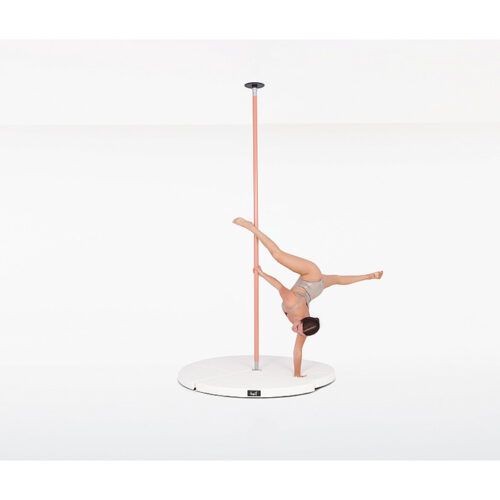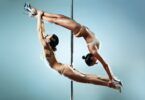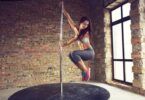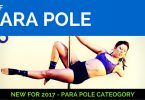Perfecting your pole technique requires more than just strength and flexibility—it demands a strong focus on safety, especially when it comes to spotting. Spotting in pole technique provides both physical and mental support, helping students progress while minimizing the risk of injury. In this guide, we’ll explore the key aspects of spotting in pole fitness and how to strike a balance between support and independence.
Spotting is a crucial responsibility of pole fitness instructors to ensure the safety and support of their students. In this comprehensive guide, we delve into the key aspects of pole dance spotting. From understanding when to spot a student to determining the appropriate level of support, we explore the best practices to create a risk-free and empowering environment in pole fitness.
The Importance of Spotting in Pole Technique
One of the key responsibilities of the pole fitness instructor is spotting. We have summarised the key aspects of the safe spotting technique below.
When to Spot a Student During Pole Technique Training
A synonym for ‘spotting’ is ‘supporting’ ie NOT lifting students into moves but rather supporting them both physically and mentally when they are attempting move. If you are not willing to carry out the spot for any reason, it’s OK (and your responsibility) to say no.
Balancing Spotting and Student Independence
Don’t be pressured by a student who wants to compromise on good technique to get into a move that they are not yet ready for. Students must be able to demonstrate their strength lifting up into and lowering down from a move with complete control. Most injuries occur when coming down from a move. This is either due to lack of muscle control, lack of focus or the student not knowing what to do to get down from a move.
Students will learn faster when they are not dependent on and do not have to be weaned from spotting. They will also build up their strength and muscle memory more effectively if they have to do the move themselves.
Have you done everything possible to enable your student to prepare physically ready for the move?
Every pole move can be conditioned, strengthened, and rehearsed in several different ways, both on the floor and on the pole. A stronger and more able student is less likely to become injured when attempting new moves.
Students and instructors alike often underestimate what it means when we say “it takes time” to master a new move. It is not possible to rush the physiological processes involved with developing a new skill. It can take years to develop the strength that is necessary for many pole techniques.
Neither the student nor the instructor will benefit from overreliance on spotting. Promoting self-awareness and a sense of responsibility in your students may be a more challenging process, but it will ultimately be much more rewarding.
However, there will be times when physically supporting a student is the best solution to help them achieve their goals. An example of this would be if a student has mastered getting up into an Ayesha but is not sure of the leg position. The spotter can hold their hips for extra support while the student masters lower their legs into the correct position, which students can find scary at first.
How Much Should You Spot?
It is not recommended for the spotter to support the entire weight of the student during a move (a full spot). This is why it is so important for the student’s ability to be assessed before carrying out a spot. Ensure that the student can perform many parts of the move or combination, before trying the next more difficult component, which may require some spotting.
The student should only attempt combinations of movements once each separate move has been mastered. A shoulder mount to thigh hold for example should only be attempted when the student can execute both a super invert shoulder mount (in other words a pencil shoulder mount with their pelvis against the pole and straight legs) and a thigh hold with a strong knee grip. Or a layback or leg release to a brass monkey should only be attempted when a student can execute a layback, straight edge, and brass monkey separately and confidently and get out of them safely themselves.
Once a student can execute part of the skill, the instructor only needs to spot in the area the student struggles with. The student eventually must perform the skill alone but will still need the spotter to stand by, ready to offer a hand, if necessary. When a student is almost ready to complete the skill alone, a light touch spot should be all that is needed.
Know your limits
Do not spot moves that you do not have detailed knowledge of. You need to be able to break down and explain exactly what your student needs to do before carrying out spotting. When attempting to spot a move you do not fully understand, you run the risk of doing more harm than good.
Be very clear about your own spotting limitations and never exceed them. If you are unsure about how to spot a student in a particular move, do not do it. Always be aware of yourself, your students and their safety.
Remember sometimes spotting is more about supporting your student mentally than physically. Just knowing you are there can often really help. Your confidence and knowledge will instill confidence in your students.
Spotting Pole Technique for Dynamic Moves
The latest and most popular pole tricks ARE dangerous and require very specific spotting techniques. Momentum-driven movements such as these require more than a light spot. Instructors who spot these moves do have to perform “full spots”, potentially taking the student’s full weight and assisting with the movement, at speed and against an increased force. Spotting for dynamic movements is much more risky and requires a high level of skill.
Key Safety Precautions for Effective Spotting
Safety when spotting is as much about the safety of the spotter as the student. It is a good idea to practice spotting with another experienced instructor as a rehearsal of the skill required. This way you can get used to the timing of the move and how best to spot the moves you are going to teach. It is useful to practice communicating whilst spotting so you can feel competent and focused when it is time to carry out the technique with a student.
Make sure that you and your student are appropriately attired for the task. Consider clothing, shoes, jewelry or buckles that could potentially cause bodily damage. Also, consider your footwear. The spotter should wear supportive shoes, such as trainers. This will allow you to stand, move and spot securely.
Communication and Consent in Spotting
Here are some basic guidelines for spotting during a pole fitness class
- Carry out a full risk assessment (studio, poles, surroundings, etc.)
- Use a safety mat.

Exclusive Offer: Enjoy a 10% discount on crash mats for our valued readers. Use code ‘CRASH10’ at checkout to claim your savings. Click on the image to buy
- Break down and teach the move very thoroughly and demonstrate the move many times
- Instructors must divide each pole trick into its separate components and identify safe and straightforward ways for the student to rehearse the skills. Students will therefore build strength and understanding of each pole trick and require minimal spotting assistance.
- Students can practice the arm positions, and understand the leg, body positions and gripping points from the floor for each move before doing the move up the pole.
- Every pole trick can be thoroughly broken down into its most basic components, no matter how complicated it is. It can take a lot of time for a student to learn a new trick. When students are required to understand all the necessary components of a trick it can be overwhelming.
Check the student’s understanding of the move
- Assess the ability of the student performing parts of the skill required (watch them physically performing parts of the skill required)
- Explain the risks to the student (that may occur during the spot)
- Explain exactly how the student will enter and exit the move safely
- Explain exactly what you will do as the spotter assisting the student
- Ask for consent from the student before carrying out the spot
- Communicate constantly with your student. This means giving ample explanation of the move throughout the spot.
- Good communication also refers to you listening, looking for cues and seeking feedback from your student.
- Ask the student questions to see if they are OK.
- Ask the student when they are ready to come down.
Maintaining Proper Posture and Stance as a Spotter
- Use a widened stance with your feet just wider than shoulder width to create a larger base of stability
- Have one foot slightly forward of the other, bend your knees and keep them bent, to ensure you have a strong base
- Keep your back up straight and strong and maintain a tight core.
- You can tuck in your chin slightly to help keep your back straight.
- Spot your student with supinated (open) hands/arms. Keep your arms and elbows close to the body whilst spotting.
- You need to keep close to your student and never twist your body whilst spotting.
Do not carry out the spot if you have any doubts!
The Instructor’s Role in Developing Pole Technique
Finally, the priority of good instructors is to facilitate the development of safe practice and solid technique. In no situation should students make a dangerous, desperate effort to get into a move, relying on only a superficial knowledge of what is required to master it. Spotting, if carried in place of knowledge and ability, puts the instructor and the student at high risk of injury.
It is the instructor’s responsibility to educate their students and develop their knowledge of how to achieve moves realistically, even if it means setting certain boundaries with them.
Conclusion: Prioritizing Safety in Pole Technique
Prioritizing safety and technique development, instructors play a pivotal role in facilitating a secure and rewarding pole fitness experience. By educating students about realistic progression, setting boundaries, and emphasizing the importance of knowledge and ability, instructors can foster a culture of safe practice. Together, instructors and students can create an environment where spotting is utilized as a tool for learning and growth, ensuring a risk-free and fulfilling pole dancing journey.
Sarah Brown – The Pole Studio UK
Tracey Simmonds – The Pole Studio SA







